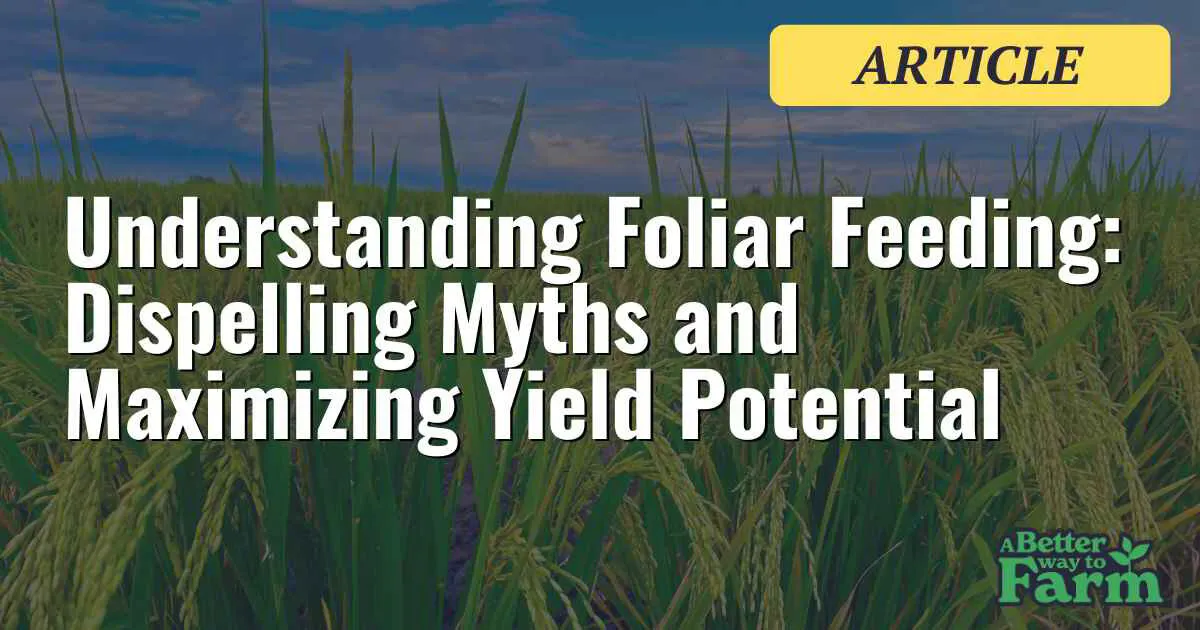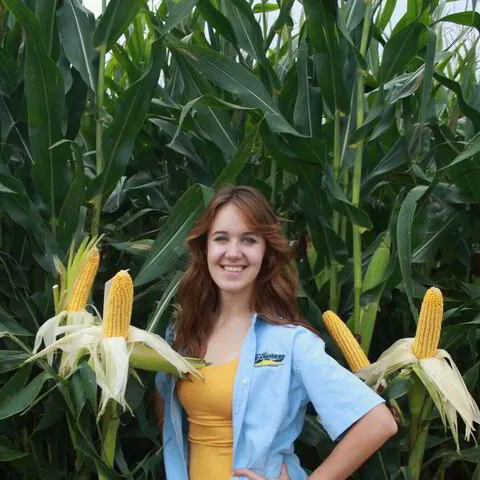In the world of agriculture, there are often conflicting opinions and myths surrounding various farming practices. Foliar feeding, in particular, has been a topic of debate among farmers and agronomists. We aim to provide clarity on the subject by debunking misconceptions and emphasizing the importance of understanding the fundamentals of foliar feeding. By doing so, we can unlock the full potential of this technique and maximize crop yields.
Unlearning and Pushing Aside Myths:
To truly grasp the concept of foliar feeding, it is necessary to unlearn some preconceived notions and push aside common myths. As with any innovative practice, there will always be naysayers who question its efficacy. However, it is crucial not to be deterred by negative opinions. The key is to get together with other farmers who are doing it successfully and who are supportive and willing to share what they are doing. When confronted with criticism regarding foliar feeding, it is essential to check the credibility of the detractors. Ask them to provide evidence of their successes in helping farmers achieve top-end yields. By questioning their track record, you can discern the value of their advice and seek guidance from experts who have a proven track record of assisting others in achieving exceptional crop yields.
The Importance of Tissue Testing
Tissue testing forms the foundation of successful foliar feeding. By analyzing plant tissue samples, farmers can identify nutrient imbalances and deficiencies. This information allows for precise recommendations on which nutrients to apply and in what quantities. Applying nutrients without conducting tissue tests can lead to imbalances and ultimately hinder crop yield. Therefore, tissue testing is a vital step in the foliar feeding process.
Understanding Ratios and Recommendations:
When interpreting tissue test results, it is essential to focus on nutrient ratios rather than simply adhering to standardized norms. Norms established years ago may not be relevant to current crop yield goals. By working with reputable laboratories, such as Midwest Labs, farmers can receive detailed recommendations specific to their crop's nutrient requirements. These recommendations help optimize yield potential by providing precise guidance on the amounts of different nutrients to apply.
Differentiating Between Broadcast Spraying and Foliage Feeding
A crucial aspect of foliar feeding is understanding the distinction between broadcast spraying and foliar feeding itself. While broadcast spraying aims to treat the soil, foliar feeding is a targeted technique that involves spraying a super-fine mist of fertilizers and micronutrients directly onto the plant leaves. Achieving optimal results requires higher pressure and a lower volume during application. Maintaining a pressure of at least 65 pounds (the higher, the better). The more we can atomize it, the more successful we will be. Additionally, using a lower volume—less than eight gallons of total solution—is another key factor in successful foliar feeding.
Maximizing Yield Potential:
To maximize yield potential through foliar feeding, it is essential to establish a solid foundation by understanding and implementing the correct techniques. Just as a building's foundation determines its stability, correctly applying foliar feeding principles determines the success of this farming practice. By adhering to the recommended pressure, volume, and application method, you can harness the electromagnetic attraction between the fertilizer mist and the plant, ensuring efficient nutrient absorption.
Foliar feeding is a technique that holds immense potential for maximizing crop yields. By conducting tissue testing, understanding ratios, and implementing proper application techniques, you can harness the power of foliar feeding to achieve your yield goals. Surrounding yourself with a knowledgeable team and seeking advice from experts with a proven track record is crucial for success. By understanding the principles and striving for excellence, you can unlock the full potential of your crop.
For more information about foliar feeding, go to abetterwaytofarm.com/get-answers
Ever since she can remember, progressive Farm Consultant Karen Livesay-Fitch has been involved with American agriculture, having grown up in a farming family. Karen has been serving farmers across the nation both as the brilliance behind a Facebook page with over 100,000 fanatic followers and as the genius behind the row crop farming information-rich website you're seeing now.



